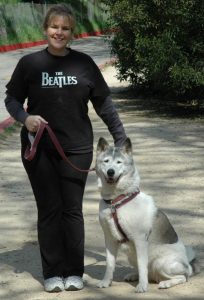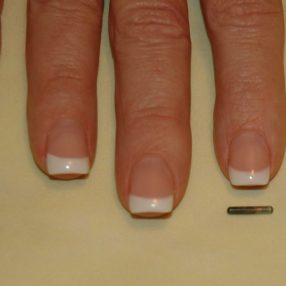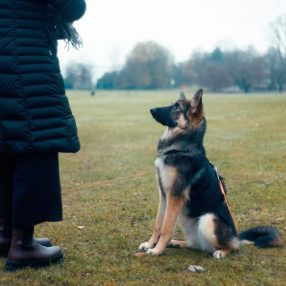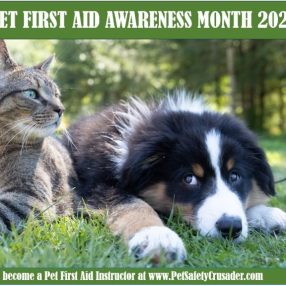 Pets that end up in shelters aren’t broken! People who don’t take time to care, train and nurture the animal are most often to blame. Sometimes the problem starts even earlier when an adopter chooses on an impulse and doesn’t take the time to research various species & breeds as well as assess his or her own lifestyle to make a match that could have been made in heaven!
Pets that end up in shelters aren’t broken! People who don’t take time to care, train and nurture the animal are most often to blame. Sometimes the problem starts even earlier when an adopter chooses on an impulse and doesn’t take the time to research various species & breeds as well as assess his or her own lifestyle to make a match that could have been made in heaven!
A dog or cat is a ten to twenty-year commitment, so make sure you are prepared and will do everything to keep that pet happy, healthy and loved for that lifetime.
If a shorter term friendship is what you seek, rabbits live 10-12 years on average while guinea pigs 5-6 years and hamsters, mice and rats 1-3 years.
 Birds vary greatly by species from 5-80 years while a tortoise may outlive you by enjoying life on this planet for 50-150 years! Learn about the animal you plan to share your life with, and remember they all require time spent with you, food, water, shelter and preventive veterinary care as well as planning for the unexpected. You have to guess one of the best ways I will share is knowing species-specific first aid and care. Additionally, each individual has his or her own special needs which you must become aware of.
Birds vary greatly by species from 5-80 years while a tortoise may outlive you by enjoying life on this planet for 50-150 years! Learn about the animal you plan to share your life with, and remember they all require time spent with you, food, water, shelter and preventive veterinary care as well as planning for the unexpected. You have to guess one of the best ways I will share is knowing species-specific first aid and care. Additionally, each individual has his or her own special needs which you must become aware of.

Felis catis are small furry carnivorous mammals we call house cats as they share our lives and the indoors with us. We value them for their companionship and ability to hunt rodents. Not all cats look or act the same. Some are active, some are couch potatoes, others like to sit quietly in your lap and purr loudly while others roam the premises vocalizing at the top of their kitty cat lungs. The Cat Fanciers Association (CFA) & The International
Cat Association (TICA) recognize more than 70 different breeds of felines, but of course, there are mixed breeds as well. In addition to breed characteristics, each cat has his or her own unique personality. However, some generalizations can be made to help you better choose the one best suited for you.
In the cat world, the American Shorthair is even-tempered and quiet while the Abyssinian is more active. The Burmese has a short coat and is very people friendly. The tail-less Manx is quiet and gentle. If you’re looking for a large cat, the Maine Coon fits the bill and as a rule, he is good with both kids and dogs. The Sphynx is hair-less (well she does have a little fuzz) while the sleek Siamese can be quite vocal. Ragdolls are docile but have long coats that need constant brushing or you’ll end up having to get a professional to shave the mats off.
 Canis lupus familiaris (aka “man’s and woman’s best friend”) is a domesticated subspecies of the Grey Wolf. Taming occurred nearly 15,000 years ago and the dog quickly became omnipresent in cultures across the globe. Dogs were extremely valuable to early human settlements, and in fact, it is often suggested that successful emigration across the Bering Strait may not have been possible without the help of dogs that pulled sleds of people and supplies. Currently, it is estimated that there are more than 400 million dogs in the world. Each breed and individual dog’s abilities however are shaped by various genetic traits and learned behaviors. Some traits were intentionally bred by humans, while others were a result of the need to survive. Due to his wide range of traits, the dog has developed into hundreds of breeds representing more behavioral and physical variations than any other land mammal.
Canis lupus familiaris (aka “man’s and woman’s best friend”) is a domesticated subspecies of the Grey Wolf. Taming occurred nearly 15,000 years ago and the dog quickly became omnipresent in cultures across the globe. Dogs were extremely valuable to early human settlements, and in fact, it is often suggested that successful emigration across the Bering Strait may not have been possible without the help of dogs that pulled sleds of people and supplies. Currently, it is estimated that there are more than 400 million dogs in the world. Each breed and individual dog’s abilities however are shaped by various genetic traits and learned behaviors. Some traits were intentionally bred by humans, while others were a result of the need to survive. Due to his wide range of traits, the dog has developed into hundreds of breeds representing more behavioral and physical variations than any other land mammal.

Long-coated pets require more grooming, so that is more time and work for you but can be so rewarding. Additionally, if you don’t “brush the kitty, brush the kitty,” she will ingest hair grooming herself which can result in troublesome fur balls. If you don’t brush out your dog, he could get matted which can lead to uncomfortable sores and ultimately cause him to have to be shaved down at the groomers.
Puppies need house-breaking and training. Will you gladly get up every two hours during the night for feedings and bathroom breaks? Can you sleep through the incessant cries coming from the tiny furry creature who wants nothing more than to be cuddled by you at 3am? And maybe those cries shouldn’t be ignored, so will you get up and see what is ailing your tiny pooch or kitten? How about those wet spots on the carpet (or the middle of your bed) until Rover learns that the great outdoors is his bathroom? Puppies and kittens don’t know the rules and require a patient human to teach them. When you adopt a small furry friend you must be prepared for sleepless nights, rushing home to let them out to answer nature’s call and remain equipped with lots and lots of endless love.
Senior pets have it down…they know their manners, are calmer and even more focused. They are often perfectly content to let you go about your day lying by your side, thrilled for a pat on the head or the occasional belly rub. They just want to be with you, but as time goes by, they may require medical care. Is your bank account prepared for that? Patience again becomes of prime importance as accidents happen when pets get older. You will need to develop ways to make clean-up easier so that you never lose your temper with your best buddy.
Large dogs need more space. It may be cramped with a Great Dane in a studio apartment, but Greyhounds are known to be couch potatoes (but outdoors they can run like the wind) and may fit the bill, but size shouldn’t be the only issue to consider. Also think about what sounds your dog might make and how loud he is in your absence. A smaller Beagle or Basset Hound, who bays and howls or a yappy Chihuahua will not make your apartment neighbor smile.

Energetic breeds (hounds, shepherds, collies, spaniels, pointers, terriers and retrievers to name a few) require a securely fenced yard high enough that they can’t jump it, but they also need to go on walks/runs, have the ball thrown and really expend that energy with you, their favorite person, several times a day.
Never impulsively add a member to your family. Do your research so that every adoption is a happily ever after!
The nearly 200 breeds recognized by the American Kennel Club (AKC) have been separated into Sporting, Non-Sporting, Working, Hound, Terrier, Herding, Toy and Miscellaneous groups. However, there are other terms used to describe dogs that enlighten us to their abilities and needs. A dog can fall into several of these types, so knowing your dog’s type can better help you know your dog.
Ancient or primitive dogs show the fewest genetic differences from the wolf and therefore most closely resemble their “canine cousins” in looks, temperament and drive. Breeds considered primitive include the Afghan, Akita, Alaskan Malamute, Chow Chow, Lhasa Apso, Basenji, Canaan Dog, Ibizan, New Guinea Singing Dog, Pekingese, Pharaoh Hound, Saluki, Shiba Inu, Samoyed, Siberian Husky and the Tibetan Terrier.
Barrel-chested dogs have round chests that provide these animals with maximum structural strength that resists compression. Students of Pet First-Aid know that sometimes CPCR is performed in a different fashion on these breeds since it’s harder to compress their strong ribcage. Rottweilers, St. Bernards and Staffordshire Terriers are considered to have barrel-shaped chests.
Bird dogs refer to any dog used by man for hunting.
Brachycephalic or flat-faced dogs have a broad, short head with a pushed-in face. Special care should be taken as these dogs often suffer breathing difficulties due to their shortened nasal passages. Do not let them get overweight or overheated as distress can occur quickly. The Boston Terrier, Boxer, English and French Bulldogs belong to this group while the Brussels Griffon, Cavalier King Charles, Pekingese, Pug, Shih Tzu and Yorkshire Terrier are often referred to as Extreme Brachycephalic meaning their muzzle practically disappears into the face.
Detection dogs are trained to detect explosives, drugs, food items, dead bodies and even human illness, while Guide Dogs assist blind, deaf and immobile humans by serving as their non-functioning eyes, ears and limbs.
Dogs with an elliptical shaped chest (such as the Jack or Parsons Russell) have a longer
more flattened rib cage which can compress slightly allowing them to go underground or in tighter quarters while maintaining sufficient lung capacity.
Lap dogs fit into your lap for cuddling; however, a 75-pound dog can become a lap dog at the sound of a loud noise so don’t rule any canine out of this category.
Molossoid dogs have deep wide chests and blunt muzzles such as the Mastiff, Bulldog, Cane Corso, Dogue de Bordeaux, Presa Canario, Rottweiler and Sharpei.
Non-Shedding is a deceiving term as every dog sheds some hair and dander, but some shed way more than others. Breeds that shed minimally include the Affenpinscher, Airedale, American Hairless Terrier, Basenji, Bichon, Cairn Terrier, Chinese Crested, Doberman Pinscher, Havanese, Italian Greyhound, Maltese, Portuguese Water Dog, Puli, Shih Tzu, Soft-Coated Wheaton Terrier, Poodle and the Yorkie.
Scent hounds specialize in following a smell or scent. Their long drooping ears help them collect scent from the air and keep it near their face and nose. A few scent hounds include the Basset Hound, Beagle, Bloodhound, Dachshund, Foxhound, Norwegian Elkhound and Rhodesian Ridgeback.
Sight or gazehounds have keen vision and great agility that helps them pursue prey by keeping it in sight and then overcoming it with tremendous speed. The Greyhound and Whippet may first come to mind, but the Afghan, Borzoi, Irish Wolfhound, Saluki and Scottish Deerhound are also this type.
Slab-sided or flat-ribbed dogs have a chest that is deeper at the midpoint making it the most flexible and compressible. Sighthounds are usually slab-sided which explains their ability to run long distances due to the flattened rib cage allowing the maximum intake of oxygen.
Teacup is a marketing term for Toy dogs. These dogs are mostly a result of selective breeding and include the Affenpinscher, Bichon Frise, Cairn Terrier, Chihuahua, American Hairless Terrier (but also comes in a larger size), Havanese, Maltese and Yorkshire Terriers.
Truffle Hounds are dogs that have been trained to find — but not eat — the high-priced truffles that grow underground.

In summary, there are a lot of animal family members to choose from. Be sure to choose the pet that is best for you, your family and lifestyle by asking yourself:
- How much time can you spend with your dog or cat each day? Cats do better at home alone than do most dogs.
- Where will your pet be while you are at work, school or running errands? In a crate, one room or have free roam of the house?
- Do you have a securely fenced yard for dogs that can jump over or dig under? Some canines are Houdinis and can escape just when you think you’ve covered all of your bases.
- Where will you place the pet’s bed, bowls and toys so that they are not in the way but safely positioned?
- Can your budget accommodate an animal’s basic needs? Food, bed, collar & leash, toys, micro-chipping, spay/neuter, veterinary exams, flea/tick prevention, training and the unexpected.
- How much time can you spend grooming? Even with a groomer, you need to do daily maintenance and a good head-to-tail check-up weekly.
- Will you be able to take care of your new best friend no matter what? If you move, add another family member (young or old), get a new job, go off to college, have a change in health or income, what will happen to your four-legged family member?
Other Considerations:
Apartment Dweller?
Small dogs work well in small spaces, but retired Greyhounds can be couch potatoes and may be just as good of a choice as Pomeranians, Shih Tzus, Pugs, Bichon Frises and Terriers. Remember again, if your dog or cat is going to be left alone, he may call out for you during the day, so a howler (cats howl too), barker or yapper may not be the best choice if you share walls with a neighbor.
Landlord Restrictions?
It doesn’t have to be just an apartment…find out if your landlord allows pets and if there are specific restrictions (cats only, dogs under 30 lbs., specific breeds, etc.). You may be charged an additional fee but having a dog or cat makes it all worthwhile. You must find out the details in advance, however, because if you bring home a 10-pound puppy that will be 80 pounds when full grown, or a breed not specifically agreed upon, you may end up having to move (You certainly won’t give up that pet once you offered it a forever home, would you?).
Local Laws?
Some jurisdictions only allow a certain number of pets per household (a combination of three dogs or cats for instance), so check with your local animal control before you adopt.
Unfortunately, some cities ban specific breeds. Others may place restrictions on them (such as they must be spayed/neutered, wear a muzzle when in public or cannot roam certain areas). You are not only your pet’s advocate, but you are also his protector and must know how to keep him safe as well as law-abiding.
 Yard/Fencing?
Yard/Fencing?
The number of pets hit by cars every year is staggering. There are no guarantees, but teaching your dog to walk by your side on a leash with a properly fitting collar is about as close as you can come. Basic obedience training is a must, and combined with a well-secured fenced yard, it can literally save your dog’s life. If your cat enjoys the fresh air and sunshine, a securely screened porch is a great option but there is also cat fencing that prevents her from hopping over.
Dogs and cats that don’t roam the neighborhood also avoid:
- Pesticides on your neighbor’s lawn
- Poisons in garbage cans
- Fights with other animals
 When in that fenced yard, it is your responsibility to make sure your pet has access to shade, fresh water and time spent with you as well as an all-around safe environment to sniff the air or chase a squirrel. Take note at different times of the day and different seasons of the year to make sure the water bowl isn’t in the scorching sun when your pet needs it most or that the shade cast by your tree isn’t on the other side of the fence in the neighbor’s yard late afternoon.
When in that fenced yard, it is your responsibility to make sure your pet has access to shade, fresh water and time spent with you as well as an all-around safe environment to sniff the air or chase a squirrel. Take note at different times of the day and different seasons of the year to make sure the water bowl isn’t in the scorching sun when your pet needs it most or that the shade cast by your tree isn’t on the other side of the fence in the neighbor’s yard late afternoon.
Some dogs can easily scale a 6-foot wall or fence, so know your breed and your particular pet’s athletic abilities to keep him safely contained in your yard. Big or small, dogs can dig and get themselves under and out of fencing, so you may need to pour a cement barrier under the fence line or line it with railroad ties or other materials to prevent an escape! Fence topping known as “coyote rollers” which keeps wildlife from hopping your fence may also prevent Fido from leaving.
 Indoor Cats vs. Outdoor Cats?
Indoor Cats vs. Outdoor Cats?
Although some people wrongly assume it is cruel to keep a cat in the house all day, indoor cats are less likely to be exposed to viruses, don’t get into poisons found in the neighbor’s garbage, avoid getting hit by cars, attacked by wildlife or even the dog next door. According to numerous surveys, many outdoors cats live only 2-5 years while their indoor counterparts generally thrive for 10-15 years, or even more! Chances are your indoor cat won’t pick up fleas or ticks either. Ultimately, an indoor cat’s biggest problem may be boredom, but that can be alleviated with toys, another cat and time spent with YOU! It just makes good safety sense to protect your cat by keeping her indoors.
If kitty enjoys fresh air beyond the screened porch, special fencing that attaches to your chain link angling inward 45° can prevent her from roaming but may not prevent predators from getting in. Human supervision is always an important component. Also be diligent checking window screens making sure your sun-worshiping feline can’t push it loose and topple to the ground from an upstairs sill. Cats do not always land on their feet and are often injured.
 Children?
Children?
Labrador Retrievers, Golden Retrievers, Shepherds and Schnauzers are only a few breeds that make wonderful family dogs while small dogs can sometimes become overwhelmed by the smallest humans and act snippy. Supervise ALL animals around children, and teach children not to disturb a dog or cat while it is sleeping, eating or playing with its toys.
Both children and pets can be unpredictable and leaving them alone together without adult supervision could be a recipe for disaster. You must take charge and be there to intercede rather than trusting an animal or child to always do the right thing.
Allergies to Pets?
Don’t rule out adding a dog to the family. Being around pets can strengthen the immune system and check with your physician to see if there are medications to keep you comfortable should you get watery eyes, a runny nose or a case of the sneezes. Give it time, but vacuum the house regularly and bathe the dog weekly. All dogs shed but some that do so minimally include the Airdale, Bichon, Cairn Terrier, Maltese, Portuguese Water Dog, Puli, Shi Tzu, Poodle and Yorkie. More people seem to be bothered by cat dander but again, every animal and person are different so bring home a towel the cat has slept on for a few days. If you’re not in distress with her scent around, you might have found the perfect new friend!
 Other Pets?
Other Pets?
Introduce your dog or cat slowly and carefully to other animals in the household. Just because you want one big happy family doesn’t mean all animals will immediately (or ever) get along. Provide an out-of-claws-reach location for pocket pets, fish and birds which look like prey animals to many canines and felines.
There are always exceptions, but generally the following combinations work best in a
MULTIPLE CAT HOUSEHOLD:
- Two kittens
- An adult neutered/spayed cat and a kitten
- Two adult neutered/spayed cats (either two females or a male and a female)
- The most volatile combination seems to be two non-neutered mature male cats.
Always consider your current cat’s personality before introducing a new cat. An active cat is more likely to accept a new kitten while a quieter, more reclusive cat might prefer a mature adult as a companion.
If you’re considering adding a dog to your CANINE PACK… there just are no hard and fast rules. However, some breeds prefer not to share their lives with dogs of the same gender, so male-female combos often work best, but spay your female and neuter your male! The next best choice may be a male-male combo as female-female pairings can work but are the most likely to result in conflict.
Again, pay attention to individual personalities and activity levels — an old tired dog may not enjoy a rambunctious young whipper-snapper, and then again…that puppy might be a breath of fresh air to the senior, egging him along to enjoy his second puppyhood. Know your dog. Observe your dog and let him meet the new comer on neutral turf before you make a commitment to make an addition to the family.
Catch the video on this topic here: https://youtu.be/2BiBJHph-jI
For 20 years Denise Fleck’s Sunny-dog Ink motto has been “Helping people to help their pets,” and she has…personally having taught close to 20,000 pet lovers animal life-saving skills and millions more on “The Doctors,” CNN, “Kirstie Alley’s Big Life,” Animal Planet and other TV shows. Denise is a frequent conference speaker, developed a line of pet first aid kits, written a dozen books and now offers classes online.
Note: The articles on this page are copyrighted. Please do not reprint or use portions for any purpose without written permission from the author. Request permission for usage by sending an email explaining how you’d like to use the materials and what parts specifically. Thank you in advance!










